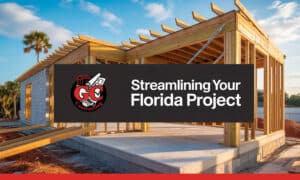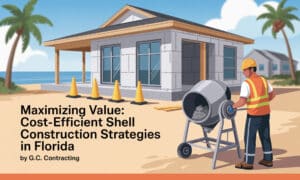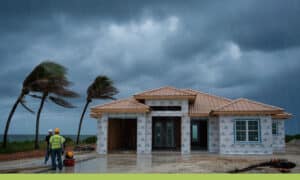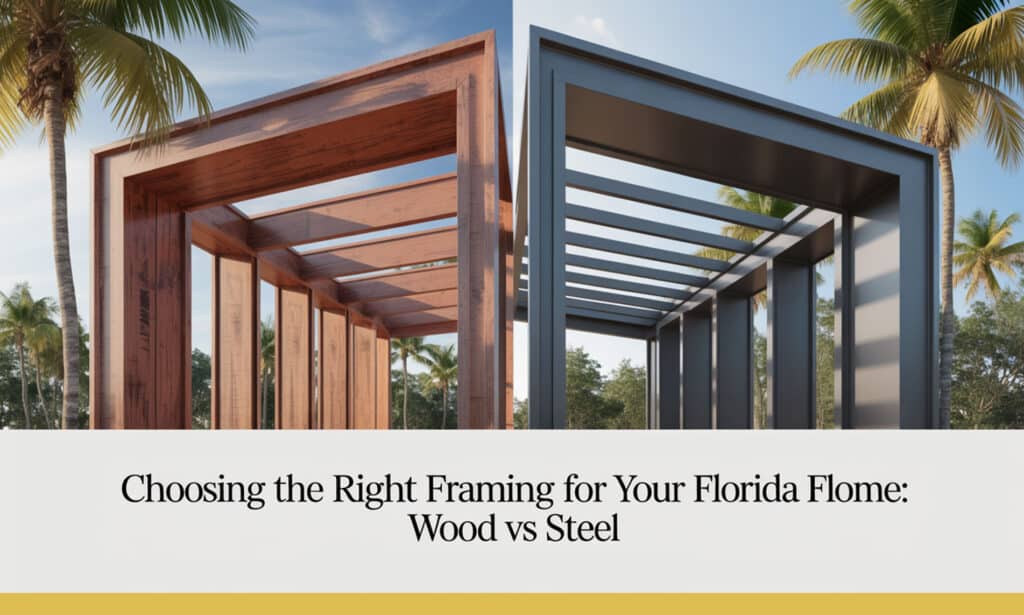
Index
- Introduction: The Foundation of Your Florida Dream Home
- Understanding Residential Framing
- Wood Framing: A Traditional Choice
- Steel Framing: A Modern and Robust Alternative
- Key Considerations for Florida Home Framing
- Wood vs. Steel: A Detailed Comparison Table
- Making the Right Choice for Your G.C. Contracting Home
- G.C. Contracting: Your Trusted Florida Shell Construction Partner
- Conclusion: Building a Strong Future for Your Florida Home
- Call to Action: Get a Free Framing Consultation with G.C. Contracting

Introduction: The Foundation of Your Florida Dream Home
Building a home in the Sunshine State is an exciting endeavor, and at G.C. Contracting, we understand that a solid foundation is crucial for bringing your vision to life. The framing of your residential structure serves as the very skeleton upon which your entire home will be built. It’s the essential framework that provides structural integrity, defines the layout, and ultimately ensures the safety and longevity of your investment. Choosing the right framing material is a critical decision that will impact everything from the initial construction costs to the long-term maintenance and resilience of your Florida home. This comprehensive guide will delve into two of the most common residential framing options: wood and steel, highlighting their advantages and disadvantages, particularly within the unique climate and environmental considerations of Florida.
Understanding Residential Framing
What is Framing?
Residential framing is the process of constructing the skeletal structure of a house. It involves assembling interconnected structural members, typically made of wood or steel, to create the walls, floors, and roof of a building. This framework provides support for all other building components, including the exterior cladding, insulation, drywall, windows, doors, and roofing materials. Accurate and robust framing is paramount for the stability and safety of the home.
Why is Choosing the Right Framing Important in Florida?
Florida presents a unique set of challenges and considerations when it comes to residential construction. The hot and humid climate, the constant threat of pests like termites, and the potential for severe weather events such as hurricanes all play a significant role in determining the most suitable framing materials for homes across the state. The wrong choice can lead to costly repairs, structural issues, and a reduced lifespan for your home. At G.C. Contracting, with our extensive experience in commercial and residential shell construction (slab, block, and frame) across Florida, we understand these nuances and are committed to helping you make informed decisions about your framing options.
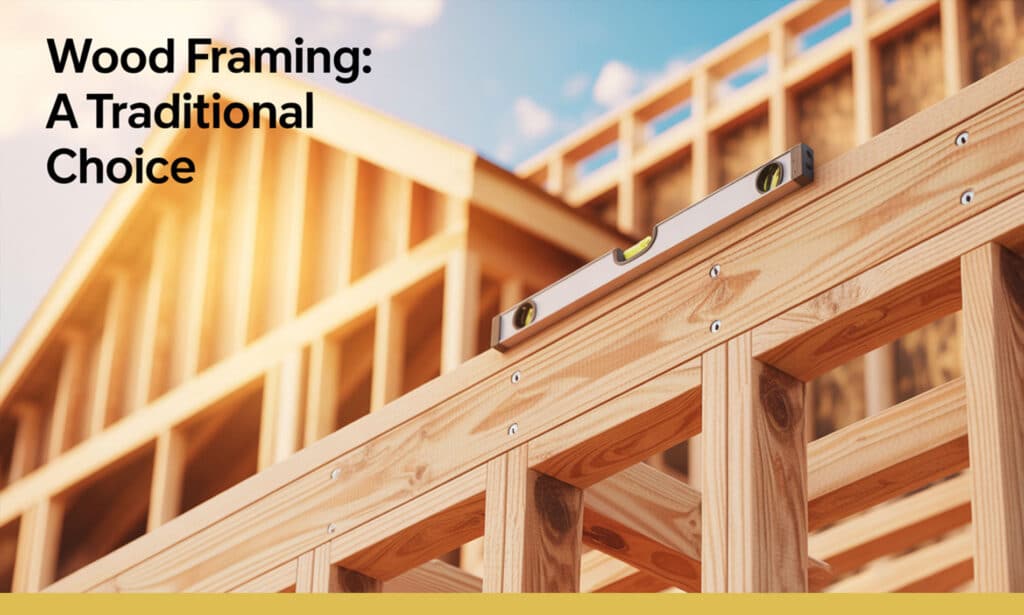
Wood Framing: A Traditional Choice
Wood framing has been the dominant method of residential construction in North America for centuries. Its familiarity, relative affordability, and ease of use have made it a popular choice for many homeowners and builders, including those in central Florida.
Advantages of Wood Framing
Cost-Effectiveness
Generally, the initial cost of lumber is lower than that of steel. This can translate to lower upfront construction expenses, making wood framing an attractive option for budget-conscious homeowners.
Ease of Installation
Wood is a relatively lightweight and easily workable material. Carpenters are typically highly skilled in wood framing techniques, and standard tools can be used for cutting, shaping, and fastening wooden members. This can lead to faster construction times in some cases.
Familiarity and Availability
Lumber and related wood framing materials are widely available throughout Florida and the United States. Building codes and construction practices are well-established for wood-framed structures, making the permitting process relatively straightforward.
Design Flexibility
Wood framing offers significant flexibility in terms of design. It can be easily adapted to accommodate complex architectural styles and custom home designs prevalent in Florida. Modifications and additions can also be more readily made to wood-framed structures.
Sustainability (with responsible sourcing)
When sourced from sustainably managed forests, wood can be a renewable and environmentally friendly building material. Look for lumber certified by organizations like the Forest Stewardship Council (FSC) to ensure responsible forestry practices, an increasingly important consideration for homeowners in Florida.
Disadvantages of Wood Framing in Florida
Susceptibility to Pests and Rot
Florida’s warm and humid climate creates an ideal environment for wood-destroying organisms like termites, carpenter ants, and wood-boring beetles. Wood is also susceptible to rot and decay, especially in areas with high moisture levels or poor ventilation. Regular pest control treatments and preventative measures are essential for wood-framed homes in Florida.
Vulnerability to Moisture and Humidity
High humidity levels can cause wood to absorb moisture, leading to swelling, warping, and the growth of mold and mildew. This can compromise the structural integrity of the framing and negatively impact indoor air quality, a significant concern in Florida’s climate, including here in Sanford. Proper ventilation and moisture management are crucial for mitigating these risks.
Fire Risk
Wood is a combustible material, which means it can contribute to the spread of fire. While building codes mandate certain fire-resistant measures, wood framing inherently poses a higher fire risk compared to non-combustible materials like steel.
Potential for Warping and Shrinking
Over time, wood can warp, twist, and shrink due to changes in moisture content. This can lead to issues such as squeaky floors, sticking doors and windows, and cracks in walls and ceilings, common occurrences in Florida homes. Proper drying and seasoning of lumber can help minimize these issues, but they cannot be entirely eliminated.
Environmental Concerns (deforestation if not sustainably sourced)
If lumber is not sourced from sustainably managed forests, its use can contribute to deforestation and habitat loss. Choosing certified lumber and exploring engineered wood products can help address these concerns for environmentally conscious homeowners.
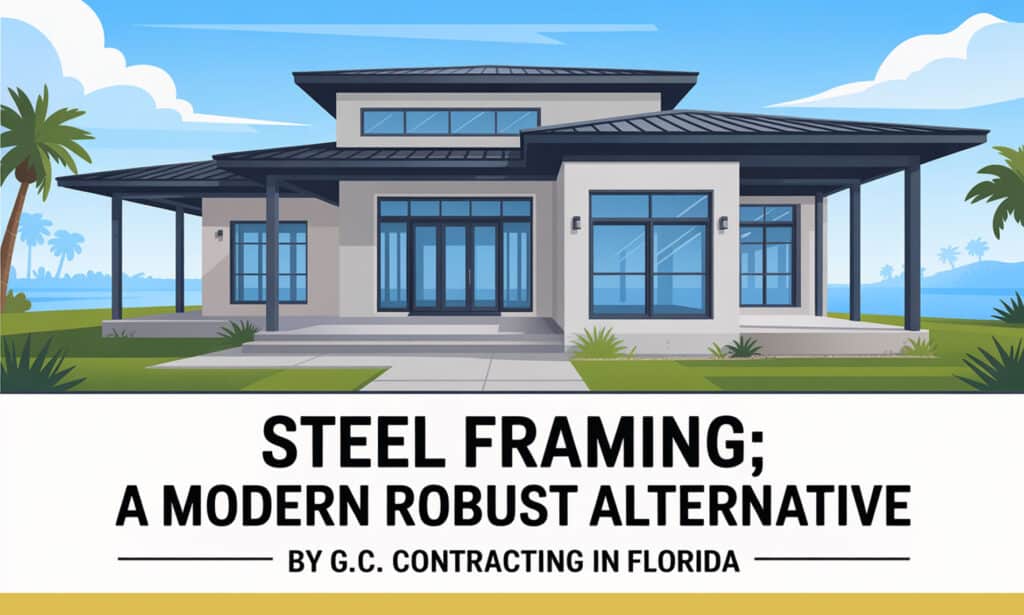
Steel Framing: A Modern and Robust Alternative
Steel framing is gaining popularity in residential construction due to its strength, durability, and resistance to many of the challenges posed by Florida’s environment.
Advantages of Steel Framing
Durability and Strength
Steel is significantly stronger than wood on a strength-to-weight ratio. This allows for wider spans and greater design flexibility in some cases. Steel framing is also highly resistant to seismic activity and high winds, making it a robust choice for hurricane-prone areas like Florida, including Sanford.
Resistance to Pests and Rot
Steel is an inorganic material, meaning it is impervious to termites, carpenter ants, wood-boring beetles, and fungal growth that cause rot and decay. This eliminates the need for ongoing pest control treatments specifically targeting the framing, a significant advantage in Florida.
Non-Combustible Material
Steel is non-combustible and will not contribute to the spread of fire. This can potentially lead to lower insurance premiums in some cases and provides an added layer of safety for your home in central Florida.
Dimensional Stability
Steel does not absorb moisture, so it will not swell, shrink, warp, or twist over time. This dimensional stability helps to prevent issues like squeaky floors, sticking doors and windows, and cracks in walls and ceilings, leading to lower long-term maintenance costs for Florida homeowners.
Recyclability
Steel is one of the most recycled materials in the world. Using steel framing can contribute to a more sustainable building practice by utilizing recycled content and ensuring the material can be recycled again in the future, appealing to environmentally aware residents of central Florida.
Disadvantages of Steel Framing in Florida
Higher Initial Cost
The initial cost of steel framing materials can be higher than that of lumber. However, this difference can be offset by lower long-term maintenance costs and potential insurance savings for homeowners.
Specialized Labor Required
Steel framing requires specialized tools and skilled labor for cutting, welding, and fastening. The availability of contractors experienced in residential steel framing may be more limited compared to wood framing carpenters in the central Florida area.
Thermal Conductivity
Steel is a good conductor of heat. Without proper insulation, steel-framed homes can experience greater heat transfer, potentially leading to higher energy bills in Florida’s hot climate. Effective thermal breaks and insulation are crucial in steel-framed construction.
Potential for Corrosion (in coastal environments if not properly treated)
In coastal areas with high salt content in the air, steel can be susceptible to corrosion if not properly treated with protective coatings. However, modern steel framing materials are typically galvanized or otherwise coated to prevent rust and ensure longevity, even in harsh marine environments.
Less Design Flexibility (can be overcome with skilled engineering)
While steel offers strength for longer spans, modifications and intricate designs may require more complex engineering and fabrication compared to wood framing. However, with skilled engineering and design, steel can accommodate a wide range of architectural styles popular in Florida.
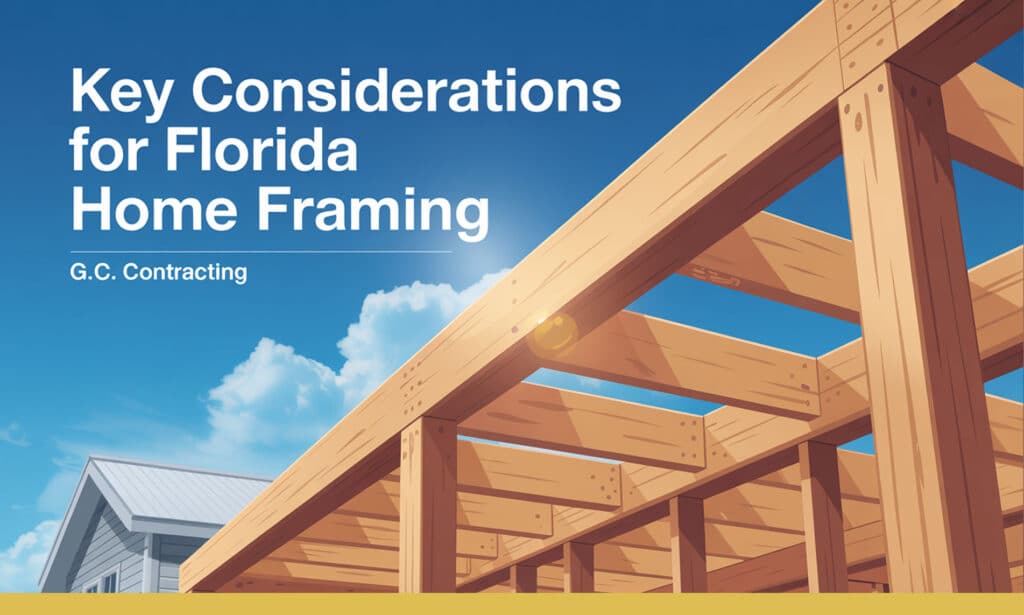
Key Considerations for Florida Home Framing
When choosing between wood and steel framing for your Florida home, especially in central Florida, several key factors should be carefully considered:
Climate Factors: Humidity, Heat, and Hurricanes
Florida’s high humidity and intense heat can take a toll on building materials. Wood is susceptible to moisture-related issues, while steel requires careful insulation to prevent heat transfer. The potential for hurricanes necessitates a strong and resilient framing system. Steel’s inherent strength and resistance to high winds make it an appealing option in hurricane-prone regions like central Florida.
Pest Control: Termites and Other Wood-Destroying Organisms
Termites are a significant concern for homeowners in Florida. Wood framing requires ongoing vigilance and preventative treatments to protect against these pests. Steel framing eliminates this concern entirely.
Building Codes and Regulations in Florida
Florida has specific building codes designed to address the state’s unique environmental challenges, including wind resistance and energy efficiency. Both wood and steel framing can be engineered and constructed to meet these codes.
Budget and Long-Term Costs
While the initial cost of wood framing may be lower, it’s essential to consider the long-term costs associated with maintenance, pest control, potential repairs due to moisture damage, and insurance. Steel framing may have a higher upfront cost but can offer lower long-term maintenance and potentially lower insurance premiums due to its durability and fire resistance for homeowners.
Environmental Impact and Sustainability Goals
If sustainability is a priority for your home in central Florida, consider the sourcing of wood (look for FSC-certified lumber) and the recyclability of steel. Steel is a highly recyclable material, which can be a significant environmental advantage.
Design Complexity and Architectural Style
Both wood and steel can accommodate a wide range of architectural styles prevalent in Florida. However, very intricate or highly customized designs may be more easily achieved with wood framing, while steel may require more specialized engineering and fabrication for complex geometries.
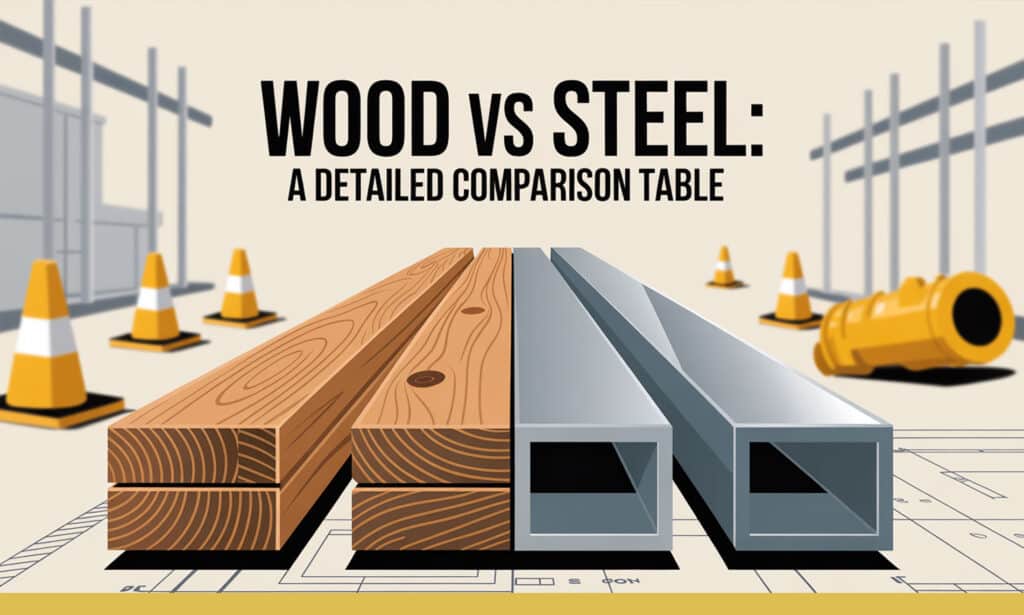
Wood vs. Steel: A Detailed Comparison Table
| Feature | Wood Framing | Steel Framing |
|---|---|---|
| Initial Cost | Generally lower | Generally higher |
| Installation | Easier, familiar techniques | Requires specialized labor and tools |
| Pest Resistance | Susceptible to termites and other pests | Impervious to pests |
| Moisture Resistance | Susceptible to rot, mold, and swelling | Dimensionally stable, not affected by moisture |
| Fire Resistance | Combustible | Non-combustible |
| Strength & Durability | Lower strength-to-weight ratio | Higher strength-to-weight ratio, more durable |
| Dimensional Stability | Prone to warping, shrinking, and twisting | Dimensionally stable |
| Thermal Conductivity | Lower thermal conductivity | Higher thermal conductivity (requires good insulation) |
| Corrosion Resistance | Not susceptible to rust | Can corrode in coastal areas if not treated |
| Design Flexibility | Highly flexible | Can be flexible with proper engineering |
| Sustainability | Renewable if sustainably sourced | Highly recyclable |
| Long-Term Maintenance | Potentially higher due to pest and moisture issues | Potentially lower |
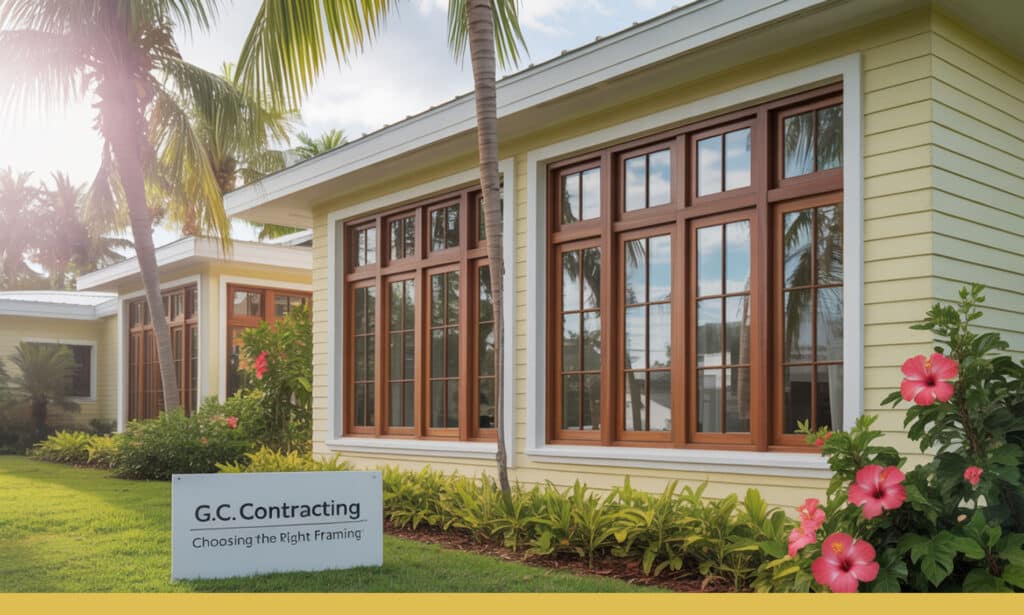
Making the Right Choice for Your G.C. Contracting Home
At G.C. Contracting, we understand that the best framing option for your home depends on your specific needs, budget, and preferences. Our experienced team can provide expert guidance and help you weigh the pros and cons of wood versus steel framing based on your project requirements and the unique conditions of your building site in Florida. We are proficient in both wood and steel framing techniques and are committed to delivering high-quality shell construction that meets the highest standards of durability and safety.
G.C. Contracting: Your Trusted Florida Shell Construction Partner
G.C. Contracting specializes in comprehensive commercial and residential shell construction services across Florida, encompassing slab work, block construction, and framing. With years of experience serving the Florida community, we have a deep understanding of the local climate, building codes, and the importance of choosing the right materials and construction methods. Our commitment to quality craftsmanship and attention to detail ensures that your home’s foundation is built to last. Whether you choose wood or steel framing, you can trust G.C. Contracting to deliver exceptional results in central Florida and beyond.
Conclusion: Building a Strong Future for Your Florida Home
Selecting the appropriate framing material is a critical decision in the construction of your Florida home. Both wood and steel offer distinct advantages and disadvantages, particularly when considering the state’s unique environmental challenges. Wood framing provides a traditional and often more cost-effective approach, while steel framing offers superior durability, pest resistance, and fire safety. By carefully evaluating your needs, budget, and long-term goals, and with the expert guidance of G.C. Contracting, serving all of Florida, you can make an informed decision that will ensure a strong, safe, and lasting foundation for your Florida dream home.
Ready to Build Strong? Get a Free Framing Consultation!
Contact G.C. Contracting today to discuss your residential framing options in the Sunshine State. Our experienced team is ready to assess your project requirements and provide you with expert recommendations.


